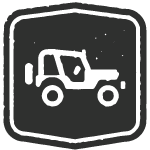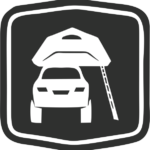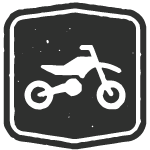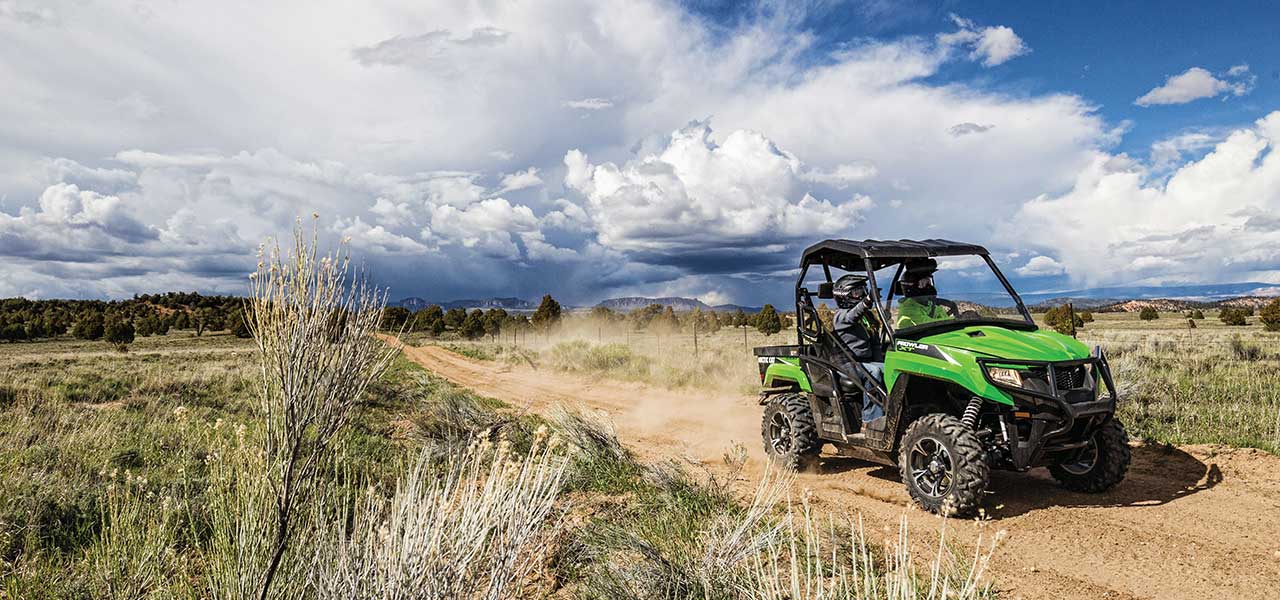
ATV
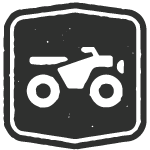

Minimize your impact by traveling only in areas open to four-wheel drive vehicles. Learn more about our RIDE ON campaign.
Knowing how to minimize your impact on the environment when you ride is critical. Below are some quick tips on responsible ATV riding in the great outdoors using the TREAD principles.
Minimize your impact by traveling only in areas open to four-wheel drive vehicles. Learn more about our RIDE ON campaign.
TRAVEL RESPONSIBLY
Travel responsibly on designated roads, trails or areas.
- Travel only in areas open to all-terrain vehicle (ATV) use.
Minimize wheel spin. On switchbacks, avoid roosting around the apex of the turn when climbing or brake-sliding during descent, both of which gouge the trail. Drive over, not around obstacles to avoid widening the trail. - Slow down when sight lines are poor. Cross streams only at designated fording points, where the trail crosses the stream.
Comply with all signs and respect barriers. - Buddy up with two or three riders, reducing vulnerability if you have an accident or breakdown. Designate meeting areas in case of separation.
When winching, always inspect your equipment, use the right winch for the situation, find a good secure anchor and never winch with less than five wraps of wire rope around the drum. - When using a tree as an anchor, use a wide tree strap to avoid damaging the trunk of the tree. More Winching Basics: Protect Those Trees and Be Safe
- Listening to headphones or ear buds can make it difficult to hear and communicate with other recreationists. In some areas it is illegal to operate ATVs with both ears covered.
- Don’t mix riding with alcohol or drugs.
RESPECT THE RIGHTS OF OTHERS
- Be considerate of others on the road or trail. Learn the basics of trail etiquette.
- Leave gates as you find them. If crossing private property, be sure to ask permission from the landowner(s).
- Yield the right of way to those passing you or traveling uphill. Yield to mountain bikers, hikers, and horses.
- Proceed with caution around horses and pack animals. Sudden, unfamiliar activity may spook animals possibly causing injury to animals, handlers, and others on the trail.
- When encountering horses on the trail, move to the side of the trail, stop, turn off your engine, remove your helmet, and speak. You want the horse to know you are human. Ask the rider how to proceed.
- Do not ride around in camping, picnicking, trailhead or residential areas.
- Keep speeds low around crowds and in camping areas.
- Keep the noise and dust down.
EDUCATE YOURSELF
Educate yourself prior to a trip by obtaining travel maps and regulations from public agencies, planning for your trip, taking recreation skills classes, and knowing how to operate your equipment safely.
- Obtain a map (motor vehicle use map where appropriate) of your destination and determine which areas are open to ATVs.
- Make a realistic plan and stick to it. Always tell someone of your travel plans.
- Contact the land manager for area restrictions, closures, and permit requirements.
- Check the weather forecast before you go. Prepare for the unexpected by packing a small backpack full of emergency items.
- Wear a helmet, eye protection, and other safety gear.
- Know your limitations. Watch your time, your fuel, and your energy.
- Take a class or the ATV Rider Course that provides a fast-paced, half-day, hands-on training session. Call the ATV Enrollment Express toll-free at 1-800-887-2887 to enroll.
- Make sure your ATV is mechanically up to the task. Be prepared with tools, supplies, spares, and a spill kit for trailside repairs. How to clean up a toxic spill on the trail.
AVOID SENSITIVE AREAS
Avoid sensitive areas such as meadows, lakeshores, wetlands and streams. Stay on designated routes.
- Other sensitive areas and habitats to avoid unless on designated routes include cryptobiotic soils of the desert or tundra and seasonal nesting or breeding areas.
- Do not disturb historical, archeological or paleontological sites.
- Avoid “spooking” livestock and wildlife you encounter and keep your distance.
- Motorized and mechanized vehicles are not allowed in designated Wilderness Areas. (What are Wilderness Areas?)
DO YOUR PART
Do your part by modeling appropriate behavior, leaving the area better than you found it, properly disposing of waste, minimizing the use of fire, avoiding the spread of invasive species, and restoring degraded areas.
- Carry a trash bag on your vehicle and pick up litter left by others.
- Pack out what you pack in. Practice minimum impact camping by using established sites, camping 200 feet from water resources and trails.
- Observe proper sanitary waste disposal or pack your waste out.
- Spark arrestors are required on all OHVs traveling on public lands.
- Prevent unnecessary noise created by a poorly tuned vehicle or revving your engine without need. Use proper silencers that meet regulatory decibel levels on exhausts.
- Before and after a ride, wash your ATV and support vehicle to reduce the spread of invasive species.
- Build a trail community. Get to know other types of recreationists that share your favorite trail.




